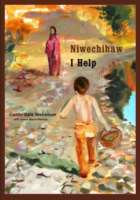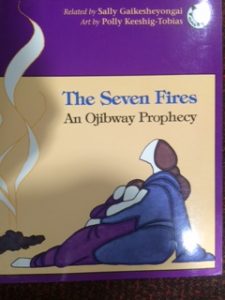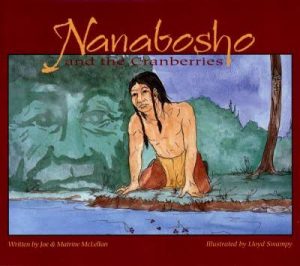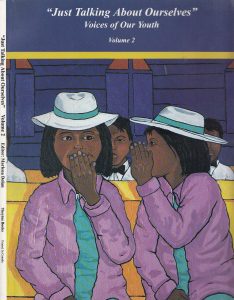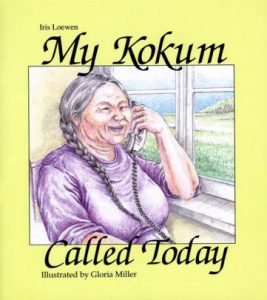 A telephone call from her grandmother has a young native girl in the city looking forward to visiting the reserve. In gentle, joyous ways we see how women — especially grandmothers — are often the spiritual glue when families are separated by long miles.
A telephone call from her grandmother has a young native girl in the city looking forward to visiting the reserve. In gentle, joyous ways we see how women — especially grandmothers — are often the spiritual glue when families are separated by long miles.
Author: Book Importer
Arctic Stories
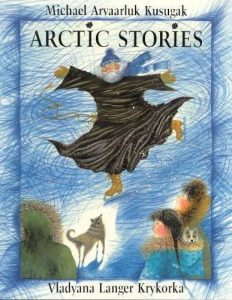 Acclaimed Inuit storyteller Michael Kusugak weaves a tapestry of tales about ten-year-old Agatha and her accidental heroism in the high Arctic of 1958. The first of Agatha’s stories is based on one of Kusugak’s real life experiences, when an eerie, black airship flew over Chesterfield Inlet in 1958. A sleepy Agatha “saves” the community from the monstrous flying object. In the second story, Agatha notices the playful antics of the winter ravens and takes an interest in the many migrating birds. As the seasons change, she begins to favor more beautiful and peaceful birds of spring, until the ravens return. The third of Agatha’s stories takes place in the fall when Agatha is sent to school in Chesterfield Inlet, an English-speaking community south of her home. During an afternoon of skating, Agatha rescues a show-off priest, who has inadvertently demonstrated the danger of thin ice. The three Agatha stories resonate with the nostalgia and affection of Kusugak’s childhood memories.
Acclaimed Inuit storyteller Michael Kusugak weaves a tapestry of tales about ten-year-old Agatha and her accidental heroism in the high Arctic of 1958. The first of Agatha’s stories is based on one of Kusugak’s real life experiences, when an eerie, black airship flew over Chesterfield Inlet in 1958. A sleepy Agatha “saves” the community from the monstrous flying object. In the second story, Agatha notices the playful antics of the winter ravens and takes an interest in the many migrating birds. As the seasons change, she begins to favor more beautiful and peaceful birds of spring, until the ravens return. The third of Agatha’s stories takes place in the fall when Agatha is sent to school in Chesterfield Inlet, an English-speaking community south of her home. During an afternoon of skating, Agatha rescues a show-off priest, who has inadvertently demonstrated the danger of thin ice. The three Agatha stories resonate with the nostalgia and affection of Kusugak’s childhood memories.
The Seven Fires
Nanabosho and the Cranberries
Mush-Hole: Memories of a Residential School
 When Maddie Harper was seven years old, she found herself in the Brantford School in Ontario with about 200 other little girls who called it “mush-hole” because mush was their daily fare. Here, Harper tells of her eight years at the school, the cultural degradation she was forced to endure, her escape at age 15, her alienation from her community, her descent into alcoholism and finally, her return to traditional ways and recovery.
When Maddie Harper was seven years old, she found herself in the Brantford School in Ontario with about 200 other little girls who called it “mush-hole” because mush was their daily fare. Here, Harper tells of her eight years at the school, the cultural degradation she was forced to endure, her escape at age 15, her alienation from her community, her descent into alcoholism and finally, her return to traditional ways and recovery.
“Just Talking About Ourselves”: Voices Of Our Youth (Just Talking About Ourselves)
Halfbreed
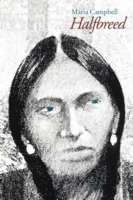
“I write this for all of you, to tell you what it is like to be a Halfbreed woman in our country. I want to tell you about the joys and sorrows, the oppressing poverty, the frustration and the dreams. . . . I am not bitter. I have passed that stage. I only want to say: this is what it was like, this is what it is still like.” For Maria Campbell, a Métis (“Halfbreed”) in Canada, the brutal realities of poverty, pain, and degradation intruded early and followed her every step. Her story is a harsh one, but it is told without bitterness or self-pity. It is a story that begins in 1940 in northern Saskatchewan and moves across Canada’s West, where Maria roamed in the rootless existence of day-to-day jobs, drug addiction, and alcoholism. Her path strayed ever near hospital doors and prison walls.It was Cheechum, her Cree great-grandmother, whose indomitable spirit sustained Maria Campbell through her most desperate times. Cheechum’s stubborn dignity eventually led the author to take pride in her Métis heritage, and Cheechum’s image inspired her in her drive for her own life, dignity; and purpose.
Welcome Song For Baby

From renowned First Nations storyteller Richard Van Camp comes a lyrical lullaby for newborns. Complemented with stunning photographs, this evocative board book is perfectly suited as a first book for every baby.
This Land Is My Land
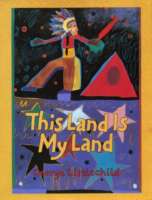
In his own words and paintings, acclaimed Native American artist George Littlechild takes young readers back in time to the first meeting between his Plains Cree ancestors and the first European settlers in North America. Through inspiring autobiographical stories accompanied by vivid, dramatic paintings, he recounts the history of his people and their relationship to the land, relating their struggles and triumphs with sensitivity, irony, and humor. Littlechild expresses his wish to use his art to portray the wonders of his heritage and to heal the pain of his people’s history and offers hope and guidance from the Native American perspective. This Land is My Land is a winner of the Jane Addams Picture Book Award and the National Parenting Publications Gold Medal.
I Help
